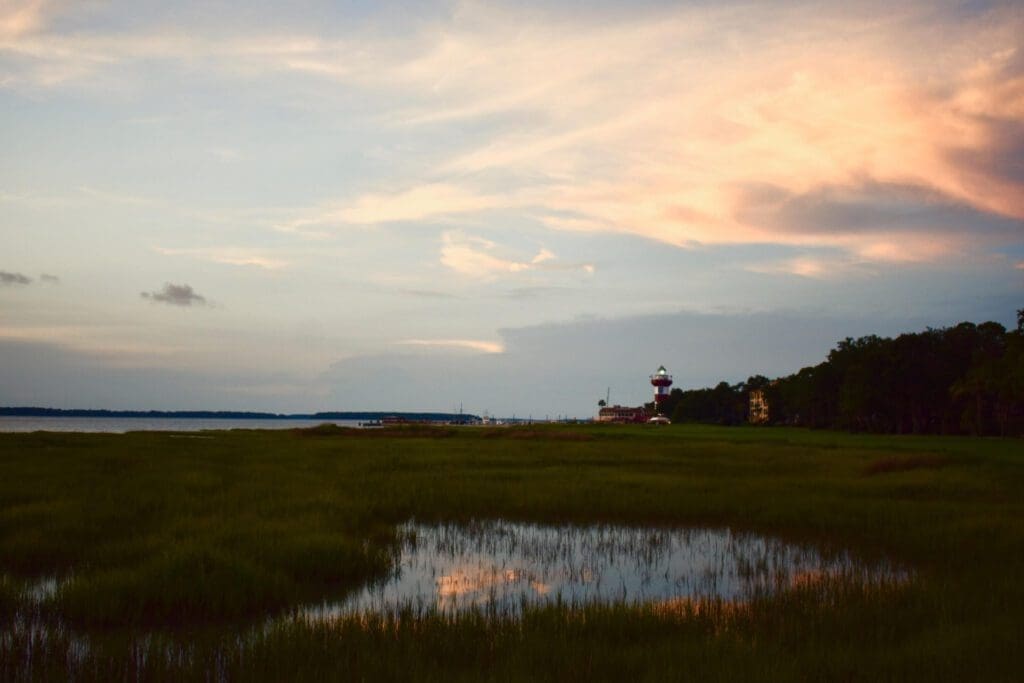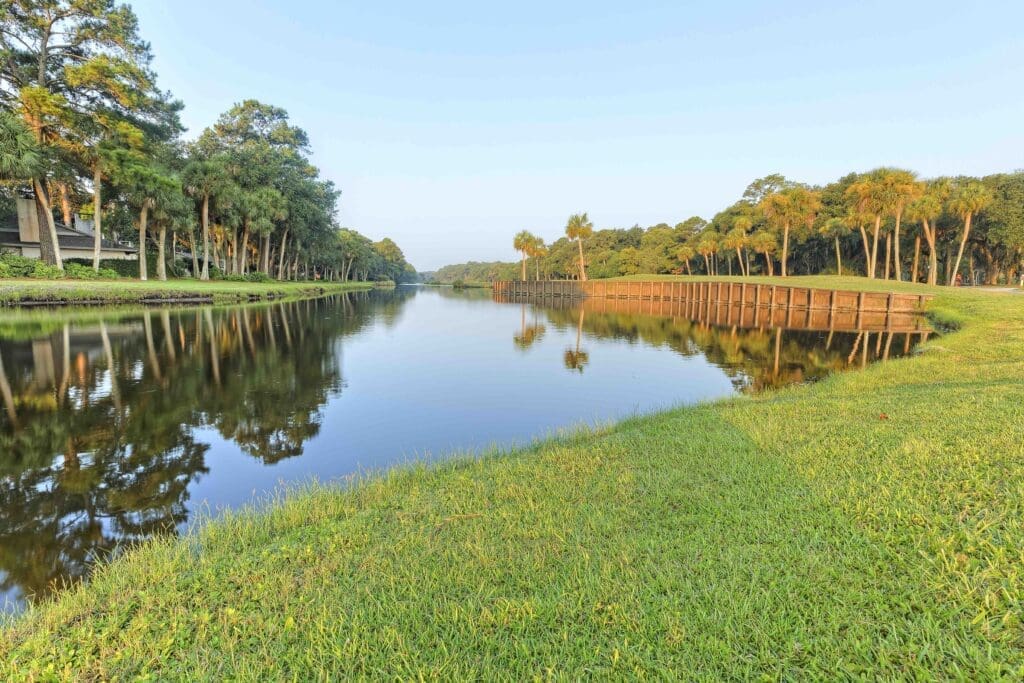The Harbour Town Lighthouse is not that old
Anyone who has has watched the PGA Tour stop on Hilton Head would recognize the 18th hole along the Atlantic Ocean and would immediately associate it to the red and white lighthouse that sits in the background from the tee and approach shots. For most viewers, it’s what reminds them of the tournament and the course. The lighthouse certainly makes it one of the most memorable finishing holes in golf. Many would assume that this was some ancient light that used to warn seafarers and assist in their navigation off the coast. That’s actually not the case at all. The lighthouse was built privately by Charles Fraser in 1970. Initially, the lighthouse was not well received and was even called “Fraser’s Folly.” It’s 90 feet high and is made of metal, lumber and stucco. The red and white design was inspired by metal girders inside the structure and is part of Fraser’s vision to make it fun and memorable. What was initially considered a terrible idea now stands as the symbol of Sea Pines Resort and Harbour Town Golf Links. It’s surrounded by shops and restaurants and even hosts weddings.
Jack Nicklaus consulted on the golf course design

Famed golf course architect, Pete Dye, was the architect of Harbour Town Golf Links. At first glance, it does have his fingerprints all over it with the water hazards, signature waste bunkers, pot bunkers and wood planking around some of the greens. However, what few know is that Jack Nicklaus, then just a player, also consulted on the design of the course. Charles Fraser, the guy who commissioned the lighthouse, knew nothing about golf but was smart enough to call Jack Nicklaus when he wanted to design Harbour Town Golf Links. Nicklaus recommended Pete Dye for the job and signed on to consult. This course proved to be a launching pad for both Dye and Nicklaus in the golf course architecture business.
Architect Pete Dye moved a lot of dirt to create the 18th hole

Dye actually used a golf course routing by architect George Cobb when laying out Harbour Town Golf Links. Cobb designed the first two golf courses on Hilton Head Island. The first was Sea Marsh in 1961 and the next was the Ocean Course in 1967. However, Dye wanted a more dramatic finish and took the design out to Calibogue Sound for the par-3 17th and par-4 18th holes. It was a genius move as it lead to one of the most iconic golf holes on the planet which is the 472 yard par-4 18th hole. One will see that the hole opens up to what some call the widest fairway on the PGA Tour. That was not the lay of the land when Dye arrived. In typical Dye fashion, the design required moving a lot of dirt. Dirt was taken from throughout the course and from dredging in the harbor. At the time, it took permission from South Carolina’s governor. The okay was given to move dirt to create new land including an area for the marina. More and more dirt kept getting moved until there was room for trees, a fairway and green. At that point, Dye went to developer Charles Fraser and asked to put the 18th on the edge of the sound. Fraser agreed and the rest is history in the creation on the iconic 18th hole at Harbour Town Golf Links.
The golf course is hard

Harbour Town Golf Links mixes golf with low country hospitality. The fairways are like ribbons of green that meander through the tall pines and stately oaks. The best players in the world make the course look like a walk in the park. Reality is that this course is tough. From the tips it plays about 7,000 yards and it sports a 75.6 rating with a 148 slope. By the way, it’s par 71. Driving the ball straight off the tee is imperative with narrow fairways. Waste bunkers and water hazards abound throughout the course. Many holes offer risk/reward decisions. The par-3 4th hole is one of those. It plays 200 yards and taking on the green means taking on the the bulkheads surrounded by water. Even a bailout shot leaves little room for error on the right with trees right and a bunker long. Reading advice on how to play the course one will see the terms strategic, lay-up, and even puzzle to be solved.
Arnold Palmer won the first Heritage Championship in 1969

Golf legend Arnold Palmer came to the 1969 Heritage Classic on a 14-month winless streak. He was 40 years old. At the end of the week, he was champion and was accepting the trophy with the iconic lighthouse just being built in the background. That was win number 55 for the king.
